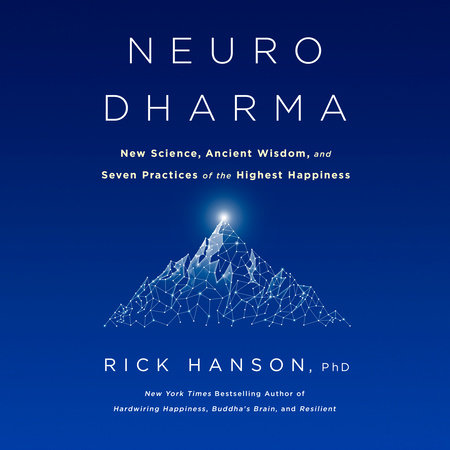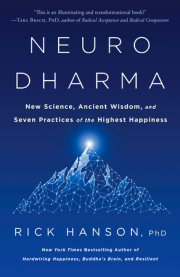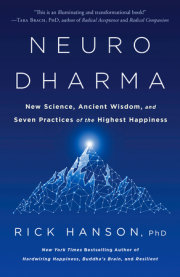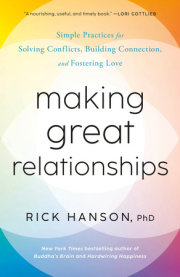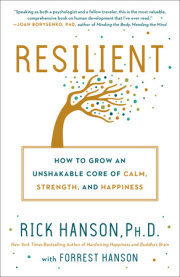1
Mind in Life
If, by giving up a lesser happiness,
one could experience a greater happiness,
a wise person would renounce the lesser,
to behold the greater.
Dhammapada 290
I’ve hiked a lot in the mountains, and sometimes a friend farther up the trail has turned and looked back and encouraged me onward. Such a friendly gesture: Come join me . . . watch out for the slippery ice . . . you can do it! I’ve often thought about those moments while writing this book, which is about the heights of human potential: about being as wise and strong, happy and loving, as any person can ever be. If those heights are like a great mountain, awakening is the magnificent journey that carries you along toward the top. Many real people have gone very far up—the great sages and teachers throughout history as well as others no one has heard about—and I imagine them turning with a sweet smile and beckoning us to join them.
Those who have climbed this mountain come from different cultures and have different personalities, but they all seem alike to me in seven ways. They are mindful; they are kind; they live with contentment and emotional balance through even the hardest times; they are whole and authentic; they are present here and now; they speak of feeling connected with everything; and a light shines through them that does not seem entirely their own.
You might have your own examples of inspiring people you’ve heard about, or whose words you’ve read or listened to, or perhaps even met. These individuals are models to us of what is possible. I’ve known some of them myself. They are down-to-earth, humorous, realistic, and supportive—not the cartoonlike stereotype of exotic characters in caves making cryptic pronouncements. They have no interest in celebrity. Some have taken a spiritual approach, while others have been secular. Their realization is genuine, and it’s the result of the path they’ve traveled, not some unique transformation that’s unattainable for the rest of us. Through their own example, they demonstrate that wonderful ways of being lie ahead, that accessible paths lead onward, and that much as their own efforts were fruitful, ours can be, too.
And remarkably, you can see some of their qualities already deep down inside yourself, even if they’re sometimes covered over by stresses and distractions. These ways of being are not reserved for the few. They are opportunities for all of us—and we’ll be exploring how to develop them in these seven practices of awakening:
• steadying the mind
• warming the heart
• resting in fullness
• being wholeness
• receiving nowness
• opening into allness
• finding timelessness
There are many traditions, which are like many routes up the mountain of awakening. Nonetheless, on each of these routes, we find the same steps taken again and again: steps of steadiness, lovingness, fullness, wholeness, nowness, allness, and timelessness. This is some of the most profound and perhaps sacred territory there is. It is ultimately beyond science and logic, so words about it can be loose, metaphorical, and poetic.
The complete development of these seven ways of being marks the pinnacle of human possibility, which could be called enlightenment or full awakening. Meanwhile, even the first simple sense of them is very useful in everyday life. For instance, while dealing with stressful challenges, it’s so good to rest in the fullness of feeling already peaceful, happy, and loved. And whether it is for the beginning of the path or its end, today we have an unprecedented opportunity to explore a kind of reverse engineering of awakening that is grounded in the living body.
Aiming High
Neuroscience is a young science. Still, we can study the examples of those who have gone far up the mountain and ask: How do you do that? What must be happening in your body so that you stay centered when things are falling apart around you? What changes in your brain help you be compassionate and strong when others are hurtful or threatening? What is the underlying neural basis for engaging life without any sense of craving, without any sense of greed, hatred, or delusion?
There aren’t yet neurologically definitive answers to these questions. We don’t know everything. But we do know more than nothing, and emerging science can highlight and explain plausibly beneficial practices. And when the science is unclear, we can still use reasonable ideas and methods from modern psychology and the contemplative traditions.
One of the things I find most inspiring about the great teachers throughout history is their invitation for full awakening. The routes they’ve charted travel from the dusty plains into the foothills and mountains and then highest peaks of enlightenment. Even in the early stages, you can find real benefits for everyday well-being and effectiveness. I’m writing for people like me, “householders” (not monastics) who have limited time for formal practice and need tools they can use right now. While I’ve been meditating since 1974 and long for the heights, numerous people have gone farther up than I, and you’ll see some of them quoted here. My focus is more on the process of practice than on the eventual destination, with the hope that you will find this useful on your own path. Still, the ultimate possibility is the complete liberation of mind and heart, with the highest happiness and most sublime peace.
As we move up the trail, it steepens and the air gets thinner. So it helps to have a guidebook. For this, sometimes I’ll turn to the penetrating analysis of the mind offered by the Buddha. My own background is in the Theravadan tradition, which is practiced widely in Southeast Asia and increasingly in the West; it is sometimes called insight—or vipassana—oriented practice. This tradition is grounded in the earliest record of the Buddha’s teachings, the Pali Canon (Pali is an ancient language related to Sanskrit). I also have deep respect for and much interest in how Buddhism has evolved in its Tibetan, Chinese, Zen, and Pure Land streams.
I’m not trying to present Buddhism as a whole, which is a rich and complex tradition that’s evolved over many years. Rather, I’m adapting and applying key ideas and methods for our practical purposes here. For these and for everything else in this book, I think the Buddha himself had some lovely advice: Come and see for yourself what rings true and is useful over time.
Copyright © 2020 by Rick Hanson. All rights reserved. No part of this excerpt may be reproduced or reprinted without permission in writing from the publisher.

